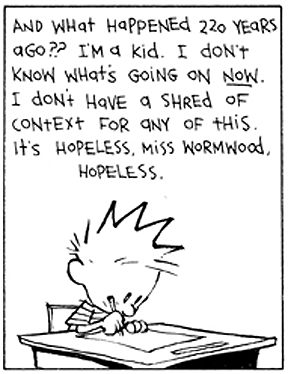The idea of using technology as a
tool to enhance teaching pedagogy and
content, instead of using it to drive
what you teach and how you teach it, has been a big struggle this week as I
worked to plan my two 5th grade Social Studies units. I have been trying to really ask myself why I
want to use certain technology and websites—is it to enhance, or am I choosing
it for the “wow” factor? I have to
really resist the urge to try to form my lessons around a piece of technology,
and instead, plan the content first and then determine how to use technology to
present the material and/or enhance the material.
I have been meeting with the Media
Specialist in our building and he has really helped put the breaks on a lot of
my enthusiasm—which doesn’t sound wonderful, but actually has been very good
for me. I realize that he is all too
familiar with students and teachers getting caught up in the “wow factor” and
not realizing how technology can also hinder learning if not planned for and
used properly. One big take-away from these
meetings has been learning about the Children’s Internet Protection Act (CIPA)
and how to search a website to see if it meets CIPA standards. For instance, when bringing the Thinklink
idea to him, the first thing he did was check the fine print to see if it was
appropriate for children 13 and under. There
is so much more than “wow” to keep in mind!
Working with middle school students
means I work with dozens of mini-media specialists. They thrive on technology, use it constantly,
and are far savvier with it than I can ever hope to be. That being said, they are still very, very
young. The idea that technology can
sometimes be a hindrance is very obvious when it comes to social media and
middle school students. The principal of my son’s school recently shared a
wonderful essay addressing the importance of teaching students the
social/emotional skills necessary to navigate social media. I thought it was a wonderful explanation of
the pitfalls of having too much “technology” (in this case, in the form of
social media) and the importance of teaching students how to handle it. I know as a parent, and as an educator, social
media, like Instagram, can be wonderful and horrible all at once. I am learning that it is also our job to
teach students how to socialize appropriately with technology.
As we all know from our own time in
middle school, it can be rough and ripe with insecurities. That age brings with it the need to fit in,
to be accepted, and the awful instinct to compare. As adults, we can still have the same issues,
just more emotional “tools” to deal with them. Thanks to social media, students are very aware of how they compare to others. Middle schoolers today are now armed with actual “data”, like how many “followers”
they have on Instagram vs. how many they are “following”, how many likes they
get, and even things like TBH (To Be Honoest) ratings. Just seeing pictures of events and activities
that they were not part of can throw most 13 year olds into a tail spin. My son’s principal referenced a wonderful TEDTalk
from a noted European psychologist named Dr. Ilona Boniwell that I think is
well worth watching in our quest for ways to teach the important emotional
skills needed to navigate a very socially involved and hyper-sensitive age.

